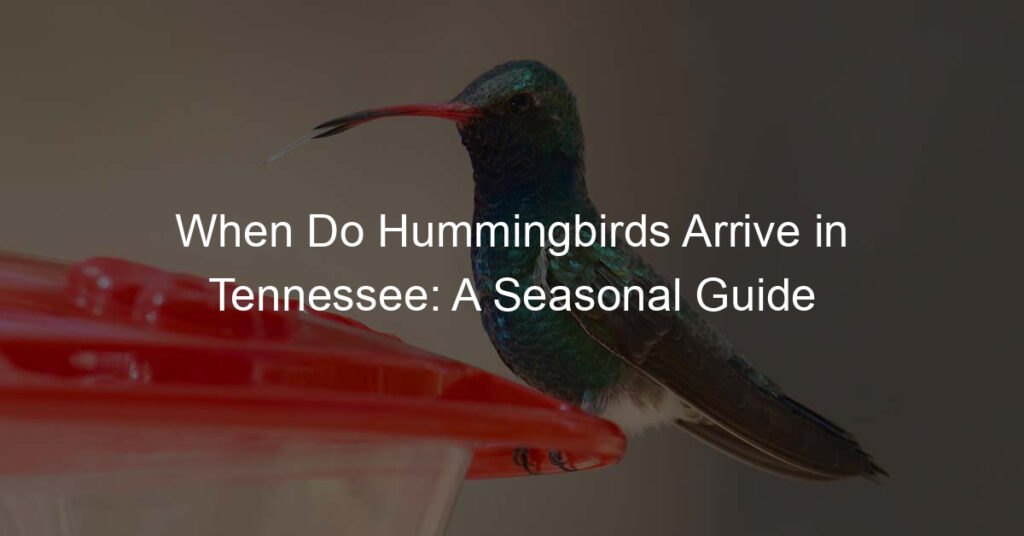As a bird enthusiast, I always look forward to the arrival of hummingbirds in Tennessee. These tiny, energetic creatures bring a sense of excitement to the state, enhancing the outdoor scenery with their vibrant colors and rapid movements.
Tennessee hosts a variety of hummingbirds, but the most common is the Ruby-throated Hummingbird, which migrates to the area each year to feed and breed.
The arrival of hummingbirds in Tennessee typically occurs during early to mid-April as they make their way from their wintering grounds in Central America and Mexico.
The specific timing can vary from year to year and is greatly influenced by factors such as weather patterns and available food sources. Bird watchers eagerly anticipate these small, fascinating visitors, planning their bird feeder setups and monitoring closely to welcome them as soon as they arrive.
Key Takeaways
- Hummingbirds arrive in Tennessee around early to mid-April for feeding and breeding.
- Ruby-throated Hummingbirds are the most common species found in the area.
- Weather patterns and food sources greatly impact their migration schedule.
When Do Hummingbirds Arrive in Tennessee

As a bird enthusiast, I can say that Tennessee is home to a variety of hummingbird species. These beautiful birds can be found throughout the state, starting from spring through late summer.
The most common species in the region is the Ruby-throated Hummingbird, which migrates to Tennessee yearly to breed.
I have observed that Ruby-throated Hummingbirds typically arrive in Tennessee between late March and early April. These birds spend their time feeding on nectar-producing flowers and insects, which provide the energy they need for their high metabolism.
By the end of summer, usually around mid-September, the Ruby-throated Hummingbirds begin their journey back to Central America for the winter.
Aside from the Ruby-throated, there are other hummingbird species that can occasionally be spotted in Tennessee. Rufous Hummingbirds, for example, sometimes appear during the winter months.
These birds are native to the western parts of North America and are known for their remarkable ability to migrate long distances. They are usually seen in Tennessee as they make their way south for the winter.
Black-chinned Hummingbirds and Calliope Hummingbirds are also occasionally seen in Tennessee, but sightings are rare. Although they are primarily found in the western United States, these species may stray eastward during migration, leading to sporadic appearances in the state.
In my opinion, every bird lover should take the opportunity to visit Tennessee and observe these fascinating little creatures. Whether you’re a casual observer or an avid birdwatcher, the sight of hummingbirds fluttering among the flowers is truly a delight to behold.
Migration of Hummingbirds
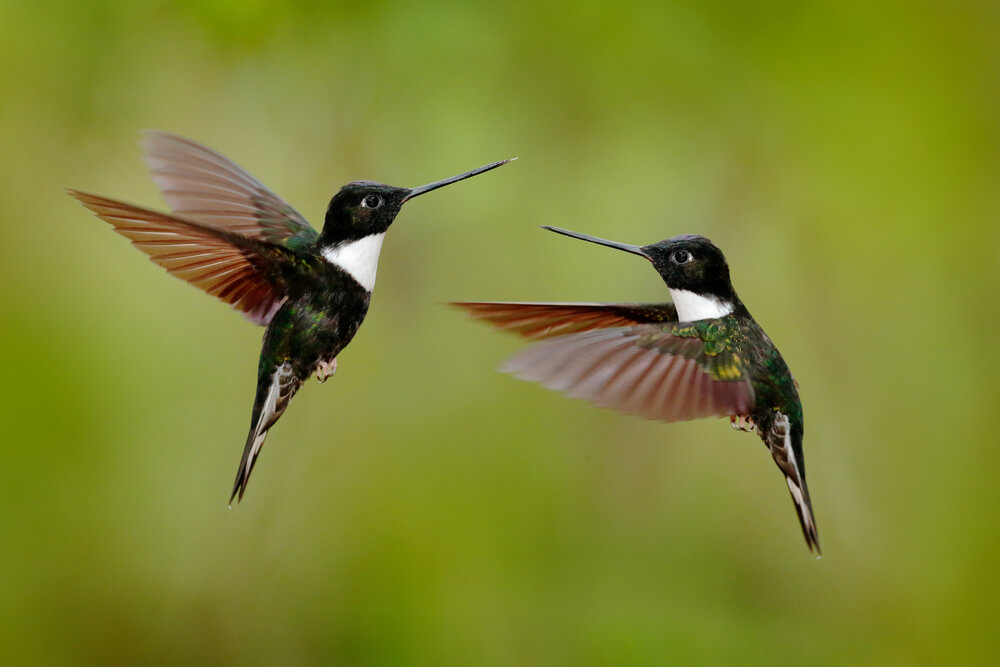
As we approach spring, the migration of hummingbirds begins. These small yet fascinating birds embark on a journey from their southern territories, like Central America and Mexico, to their breeding grounds in the north.
Tennessee has become a popular destination for several species of hummingbirds during this migration season.
In the spring, hummingbirds start to make their way to Tennessee around late February. As they travel north, some species make remarkable journeys, covering thousands of miles.
The Archilochus colubris, also known as the Ruby-throated Hummingbird, and the Archilochus alexandri, or the Black-chinned Hummingbird, are just two species that visit Tennessee. These birds tend to stay around until the late summer before flying south again for the fall migration.
In addition to the Ruby-throated and Black-chinned Hummingbirds, other species, such as the Anna’s Hummingbird (Calypte anna), Allen’s Hummingbird (Selasphorus sasin), and Rufous Hummingbird (Selasphorus rufus), have also been known to migrate through Tennessee.
Although it is less common to spot these species, they do make appearances in the state during the migration season.
As a bird enthusiast, I eagerly await the arrival of these amazing migrants. The sight of hummingbirds fluttering about in search of nectar during the spring and summer months is always a delight.
Feeding Habits
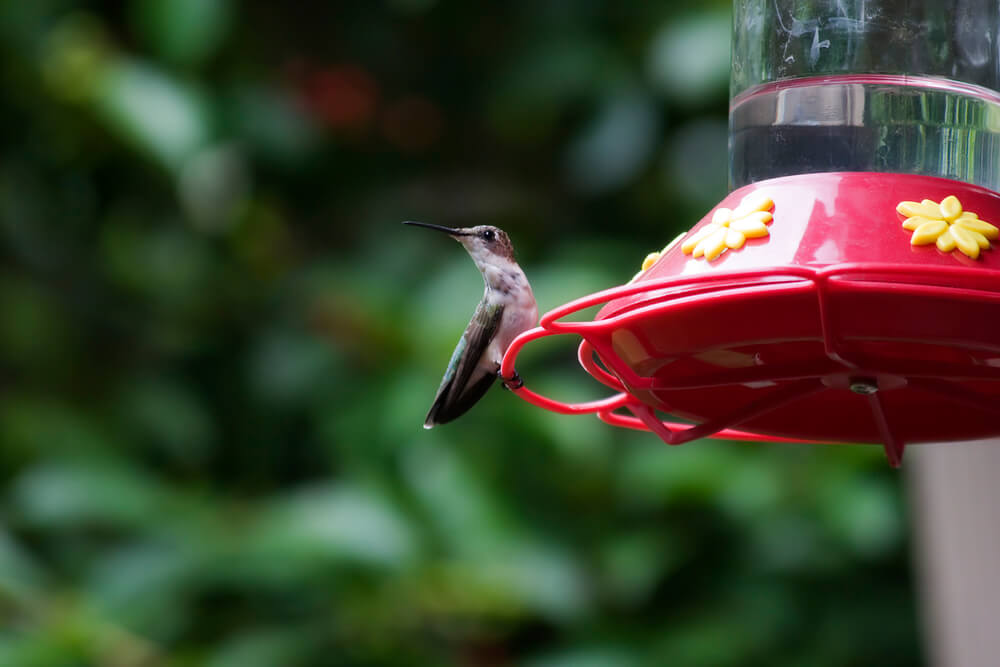
In my experience, hummingbirds in Tennessee have unique feeding habits. They primarily feed on nectar, which provides them with the energy they need to maintain their high metabolism.
They’re also attracted to feeders, especially hummingbird feeders filled with sugar water.
To prepare an ideal sugar water solution, I mix four parts of water to one part of sugar. This creates an attractive and nutritious blend for the hummingbirds. It is best to avoid using honey, as it may promote bacterial growth and have adverse effects on the birds.
In the warmer months, I’ve observed hummingbirds being especially attracted to blooming flowers. Flowering plants, particularly native plants, provide these small creatures with nutritious nectar.
I’ve found that having a variety of plants with vibrant colors, like reds and oranges, can attract more hummingbirds to my garden.
Apart from nectar, hummingbirds also require insects in their diet as a valuable source of protein. They consume various types of insects, including spiders and flying bugs.
By having a healthy flowering garden, I’ve been able to maintain a natural habitat for these insects, which in turn keeps the hummingbirds coming back.
To sum up my observations on the feeding habits of hummingbirds in Tennessee, providing a mixture of nectar, and sugar water in bird feeders and a thriving garden of native flowering plants creates an ideal environment that attracts these fascinating creatures.
Breeding in Tennessee
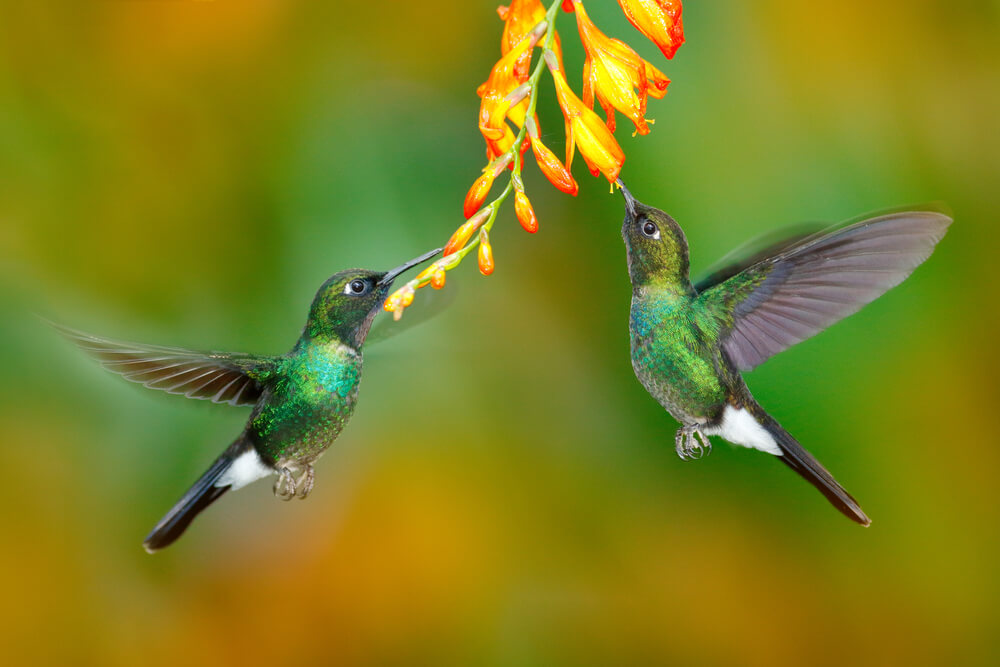
As an expert in hummingbirds, I often get asked about their breeding habits in Tennessee. In this section, I will discuss the nesting, breeding season, and habits of male and female hummingbirds in the state.
In Tennessee, the breeding season for hummingbirds typically begins in late March or early April and continues through the summer months. During this time, the male hummingbird starts its courtship display by performing an impressive aerial dance, consisting of swooping dives and intricate flying patterns, to catch the attention of the female hummingbird.
Once the female is impressed by the male’s display, they mate, and the female is then responsible for building the nest. She selects a suitable location, usually situated on a tree branch, and constructs the nest using materials such as soft plant fibers, spider silk, and lichen.
Nests are usually small and well-camouflaged, allowing the hummingbirds to stay hidden from predators.
In the nest, the female hummingbird lays one to three eggs and is solely responsible for incubating them. As I observed, incubation lasts for about two to three weeks, during which the female diligently keeps the eggs warm and protected.
The male, on the other hand, does not participate in nest building or incubation and may mate with multiple females throughout the season.
When the eggs hatch, the nestlings are born blind and without feathers. The female continues to play an essential role in raising the young, providing them with food by frequently regurgitating nectar and small insects into their mouths.
Over the next few weeks, the young develop feathers, open their eyes and become more active.
As summer comes to an end, the young hummingbirds become ready to leave the nest and start their journey into adulthood. By this time, they have learned how to fly and forage for food on their own, following their mother’s lead.
The breeding season of hummingbirds is truly an extraordinary process full of courtship, dedication, and resilience. In Tennessee, it is a delight to witness this remarkable spectacle of nature each year.
Identifying Hummingbirds in Tennessee
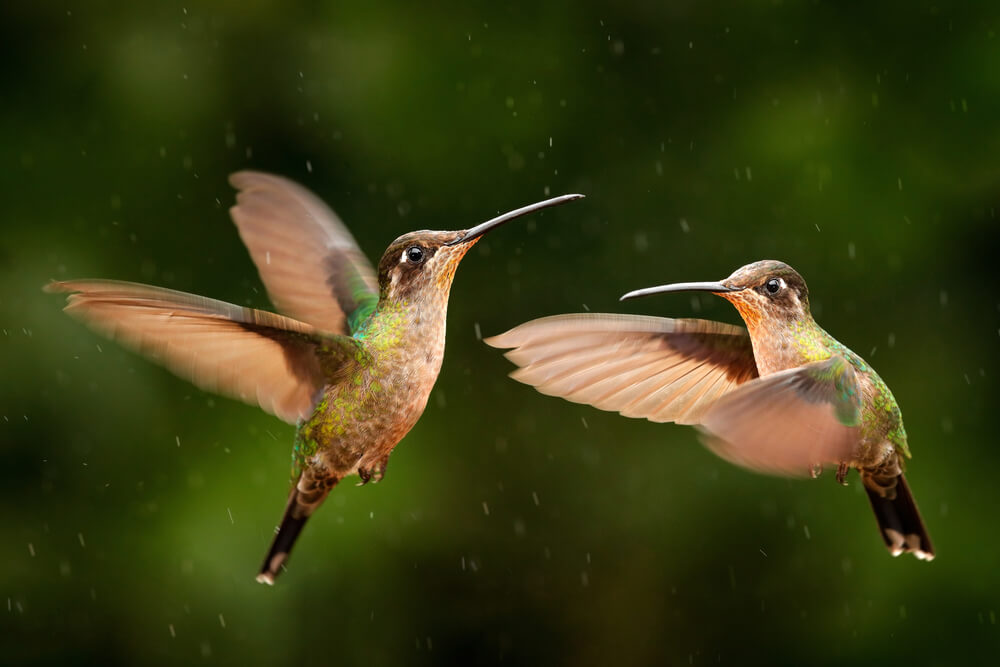
I’ve noticed that when trying to identify hummingbirds in Tennessee, the first thing to pay attention to is their bill, otherwise known as their beak. In general, hummingbirds have long and slender bills that are perfectly designed for them to sip nectar from flowers.
Nevertheless, there’s more to identifying these unique birds than just their beak.
One of the most noticeable features of hummingbirds is their greenback. This vibrant coloration is caused by iridescent pigmentation in their feathers, which reflects light, giving it a shimmering appearance.
It’s quite mesmerizing to see a hummingbird’s greenback glinting in the sunlight as it zips around the garden.
As for their size and shape, hummingbirds are quite small, often measuring between 3 and 5 inches in length and weighing only a few grams. Their compact size allows them to maneuver quickly and effortlessly as they dart from flower to flower in search of nectar.
Their wings are also uniquely structured, allowing them to hover in place and even fly backward, which is a rare ability among birds.
Another defining characteristic of hummingbirds in Tennessee is their red gorget. The gorget is the patch of bright, iridescent feathers found on a male hummingbird’s throat. Not all species have a red gorget; some may have orange, purple, or even green gorgets.
The Ruby-throated Hummingbird, the most common hummingbird species found in Tennessee, has a red gorget that helps them stand out from their surroundings and attract mates.
The population of hummingbirds in Tennessee varies throughout the year, with migration patterns influencing the number of birds present at any given time. During their peak season, it’s quite common to spot hummingbirds flourishing in local gardens and forests.
In order to identify hummingbirds in Tennessee, pay close attention to their bill, greenback, size, shape, and red gorget. Keeping these characteristics in mind can help you become more familiar with the fascinating population of hummingbirds that call Tennessee their home.
Hummingbirds and Their Habitat
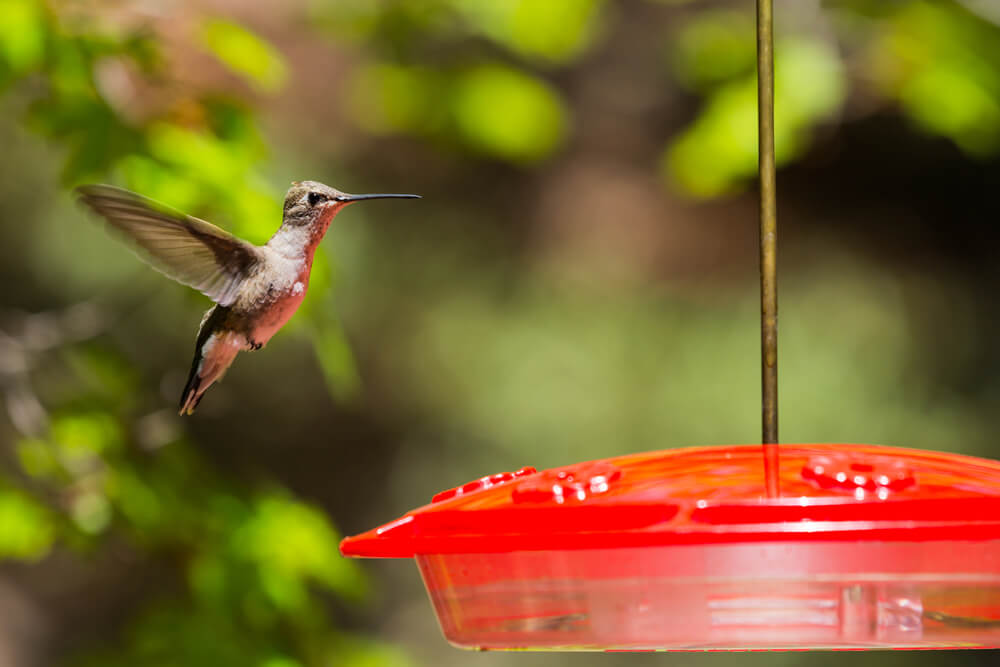
As a hummingbird enthusiast, I find it fascinating to observe these tiny, vibrant creatures in their natural habitats. Hummingbirds can be usually found in gardens, woodlands, and areas with an abundance of trees and shrubs.
They thrive in environments that provide nectar-rich flowers and insects for their nutritional needs.
I’ve noticed that in my garden, hummingbirds are particularly attracted to tubular or trumpet-shaped flowers with vivid colors like red, orange, and purple. In Tennessee, some flowers that fulfill these criteria include bee balm, trumpet vine, and coral honeysuckle.
It’s important to intersperse these flowering plants with trees and shrubs that offer shelter and perching spots.
In wooded areas, the habitat of hummingbirds is slightly different. They can be found in both deciduous and mixed woodlands, filled with a lush understory of shrubs and small trees.
This provides them with a healthy supply of insects and spiders, which are equally crucial to their diet as the nectar from flowers.
In addition, I’ve observed hummingbirds making their nests out of materials like leaves, twigs, and lichen, which they bind together with spider silk. Their nests are often found on the branches of trees or shrubs, concealed from predators.
I believe that by creating spaces in our own gardens and landscapes that cater to the needs of hummingbirds, we can encourage these magnificent birds to thrive in Tennessee.
Planting a variety of nectar-rich flowers, along with providing trees and shrubs for shelter and perching, can create the ideal environment for these tiny creatures to flourish.
Conservation Measures
As a birdwatcher and nature lover, I believe it’s essential to take conservation measures to protect the hummingbirds that visit Tennessee each year. One of the primary threats to hummingbirds is the use of herbicides and pesticides.
These chemicals not only contaminate their food sources but also harm their habitat. To help protect hummingbirds and other species, I always advise against using such harsh chemicals in our gardens.
Another crucial step for conservation is providing a suitable environment for hummingbirds to thrive. This includes offering nesting material, such as small twigs and leaves.
Further, a simple bird bath with fresh, clean water for drinking and bathing can make a significant difference in attracting hummingbirds to the area.
In the United States, many bird species, including hummingbirds, are protected by the Migratory Bird Treaty Act. This law makes it illegal to capture, kill, or harm specific bird species or their habitat.
By raising awareness about this law, we can encourage fellow birdwatchers and neighbors to support the protection of these precious creatures.
California, for example, is known for its efforts in bird conservation. As a resident of Tennessee, I strive to learn from such states and implement similar practices in my own region.
A united effort across the entire country can only contribute greatly to the conservation of hummingbirds and other avian species.
In conclusion, creating a safe and welcoming environment for hummingbirds in Tennessee is the responsibility of each and every one of us. As birdwatchers and nature lovers, we must take necessary actions to conserve these remarkable creatures and ensure their continued presence in our state.
Role of Weather Patterns in Migration
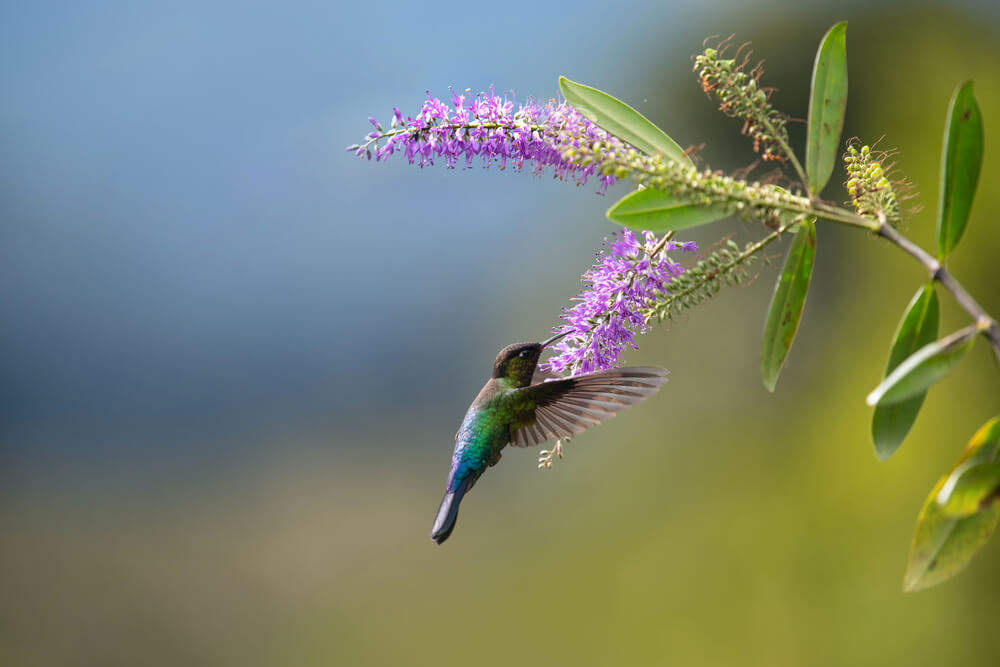
As a hummingbird enthusiast, I often observe their migration patterns to understand their arrival in Tennessee. The weather patterns play a significant role in the migration of hummingbirds from Mexico and Central America to the United States and Canada.
It is during the winter months when hummingbirds prefer staying in warmer regions of Mexico and Central America. The availability of insects and nectar-rich flowers in these regions provides them with the necessary resources to survive the winter. However, as winter comes to an end, the hummingbirds start migrating north.
In my observations, I noticed that their migration is highly influenced by the local weather patterns. For instance, as the temperatures rise in the spring, the availability of insects and flowers increases in the southern United States and the Gulf of Mexico.
This attracts hummingbirds, making them follow the “nectar highway” as they move north.
While moving north, they often encounter severe weather conditions, such as thunderstorms or strong winds. These conditions may temporarily halt their migration as they seek shelter and wait for the conditions to improve.
In some cases, the strong winds may even push them off their course.
Year-round residents of Tennessee, like me, should be aware of these weather patterns to better predict when hummingbirds arrive in the region. This knowledge also helps in providing them with appropriate feeders and shelters to aid their journey.
Understanding the role of weather patterns in the migration of hummingbirds is essential for enthusiasts and nature lovers alike. Being aware of their timing and the factors that influence their journey allows us to appreciate these tiny yet remarkable birds even more.
Recommendations for Bird Watchers
In Tennessee, hummingbirds start arriving around mid-March, with the broad-tailed hummingbird being one of the most commonly sighted species. When planning to observe these beautiful creatures, I advise bird watchers to consider a few factors.
Firstly, it’s important to note that the range and territories of different hummingbird species can vary. While broad-tailed hummingbirds are frequently spotted in Tennessee, Allen’s hummingbirds and Anna’s hummingbirds might have a lesser presence.
Knowing the range of each species will enhance your overall bird-watching experience.
When it comes to selecting the perfect location for bird watching, I recommend choosing spots with abundant water sources. Hummingbirds are attracted to water, be it a shallow stream, a still pond, or even a birdbath in your backyard.
A well-maintained birdbath with clean, fresh water can significantly increase the chances of hummingbirds visiting the area.
In addition to water, providing nectar-producing flowers can be highly beneficial for attracting a wide variety of hummingbirds.
Some popular flower options include:
- Red hot pokers
- Bee balms
- Trumpet vines
- Salvia
Moreover, I encourage bird watchers to invest in good quality binoculars and cameras for a clearer, close-up view of these speedy and small birds. Patience is also essential, as it may take time for the hummingbirds to feel comfortable around you and your equipment.
Lastly, I highly recommend taking a slow, quiet approach and avoiding sudden movements when bird-watching. This will allow you to observe the hummingbirds’ natural behavior without disturbing them.
Keeping a respectful distance is crucial to protect their well-being while enjoying their captivating presence.
Frequently Asked Questions
When does hummingbird migration start in Tennessee?
Hummingbird migration in Tennessee typically begins around mid-March. As the weather starts to warm up, these small birds make their way north from their wintering grounds in Central America.
What time of year do hummingbirds arrive in East Tennessee?
In East Tennessee, you can expect to see hummingbirds arriving as early as late March to early April. However, the peak migration period is usually from late April through May.
When should hummingbird feeders be put up in Tennessee?
It is a good idea to have your hummingbird feeders ready by mid-March so that the early arrivals can have access to a reliable food source. Keep the feeders clean and filled with fresh nectar throughout the season to attract and support the migrating hummingbirds.
When do hummingbirds leave Tennessee?
Hummingbirds typically start leaving Tennessee around the end of September as they begin their journey back to Central and South America for the winter. By mid-October, most hummingbirds have departed the state.
Are there any unique hummingbird species in Tennessee?
One of the most common hummingbird species found in Tennessee is the Ruby-throated Hummingbird. While other species like the Rufous, Black-chinned, and Calliope hummingbirds may occasionally be spotted, the Ruby-throated Hummingbird is the primary species that breeds and migrates through Tennessee.
How long do hummingbirds stay in Tennessee during migration?
During their spring migration, hummingbirds will typically stay in Tennessee for about two to three months. They arrive in late March to early April and depart around late June to early July.
This allows the birds time to find suitable breeding sites, raise their young, and fatten up for their long journey back to their wintering grounds.

